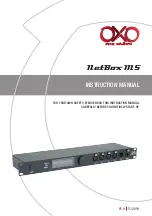
4
Surge protection devices (SPDs) for PV installation
Lightning will cause damage either from a direct strike or from surges due to a nearby
strike.
Induced surges are the most likely cause of lightning damage in majority or installations,
especially in rural areas where electricity is usually provided by long overhead lines.
Surge may be included on both the PV array conduction and the AC cables leading to
the building.
Specialists in lightning protection should be consulted during the end use application.
Using appropriate external lightning protection, the effect of a direct lightning strike into
a building can be mitigated in a controlled way, and the lightning current can be
discharged into the ground.
Installation of SPDs to protect the inverter against mechanical damage and excessive
stress include a surge arrester in case of a building with external lightning protection
system (LPS) when separation distance is kept.
To protect the DC system, surge suppression device (SPD type2) should be fitted at the
inverter end of the DC cabling and at the array located between the inverter and the PV
generator, if the voltage protection level (VP) of the surge arresters is greater than
1100V, an additional SPD type 3 required for surge protection for electrical devices.
To protect the AC system, surge suppression devices (SPD type2) should be fitted at
the main incoming point of AC supply (at the consumer‟s cutout), located between the
inverter and the meter/distribution system; SPD (test impulse D1) for signal line
according to EN 61632-1.
All DC cables should be installed to provide as short a run as possible, and positive and
negative cables of the string or main DC supply should be bundled together. Avoiding
the creation of loops in the system. This requirement for short runs and bundling
includes any associated earth bundling conductors.
Spark gap devices are not suitable to be used in DC circuits once conducting, they
won‟t stop conducting until the voltage across their terminals is typically more than 30
volts.
Anti-Islanding Effect
Islanding effect is a special phenomenon that grid-connected PV system still supplies
power to the nearby grid when the voltage loss is happened in the power system. It is
dangerous for maintenance personnel and the public.
TSOL series inverter provides Active Frequency Drift (AFD) to prevent islanding effect.
WARNING
!
Over-voltage protection with surge arresters should be provided when the
PV power system is installed.
The grid connected inverter is not fitted with SPDs in both PV input side and
MAINS side.
Summary of Contents for TSOL-H3.0K-H
Page 1: ...TSOL H3 0K H TSOL H3 6K H TSOL H4 0K H TSOL H4 6K H TSOL H5 0K H TSOL H6 0K H...
Page 2: ......
Page 39: ...35 Step4 Step3...
Page 56: ......
Page 57: ......
Page 58: ......









































